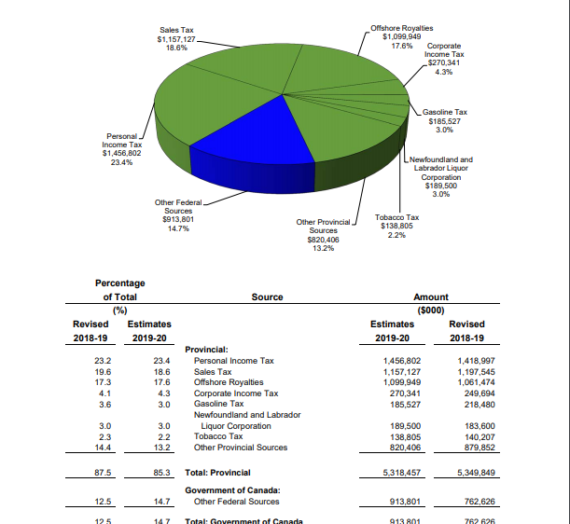While working on another article, I discovered a pattern in how healthcare costs have changed in Canada over the last 25 years.

From this data (Source: Provincial budget estimates for ON, AB, and NL), it would appear that Newfoundland and Labrador is actually doing better than some folks. The reasons for this are complex, but I’ll talk about them a little bit below.
The average growth in costs has been about 5.3% for both Canada nationally and Newfoundland and Labrador provincially (Source: CIHI’s National Health Expenditures Trends). This is obviously much higher than the rate of inflation, which means there are other factors coming into play. CIHI actually addresses this in their Health Care Costs and Drivers report:

This is obviously a time-limited window into cost growth – and during a particularly high-growth period to boot – and in Newfoundland and Labrador our picture will be different, with Aging being a much larger factor and Population Growth being practically nonexistent because of our specific demographic factors, and also the fact that getting old suuuuucks.

But at least we have a sense of how factors stack up, and, importantly, how they pile up on top of inflation. And that is a key thing to understand; inflation means absolute numbers go up, but generally revenue will follow the same curve, leading to flat “real” growth in costs. Exponential growth beyond the rate of inflation, however, gets really bad, really fast.
The solution is simple in theory: We have to find ways to apply negative cost factors to healthcare, reducing the overall growth of costs below the rate of inflation for a couple of decades. When someone talks about “efficiencies”, that’s what that would actually mean – doing more with less, all that fun stuff. Maybe we hire 1000 robot doctors for the price of 10,000 real ones. Maybe we just bus everybody to Gander once a year for checkups. You have to innovate to economize, people!
Unfortunately, we are often competing for healthcare resources with other provinces, and nobody else in Canada is succeeding at this to any great extent, either. So we have limited tools for reducing costs in the immediate future. But the next time everybody gets together, this might be the uncomfortable subject that most needs direct address.
I hope you’ll agree, then, that this is a problem that needs a national approach. I may try to address it another time. For now, suffice to say, we’re spending about $1B more on healthcare than we should be relative to inflation solely because of this exponential growth in costs across the country. Closing that gap seems imperative, but it is a massive undertaking, and we have other things to consider.


